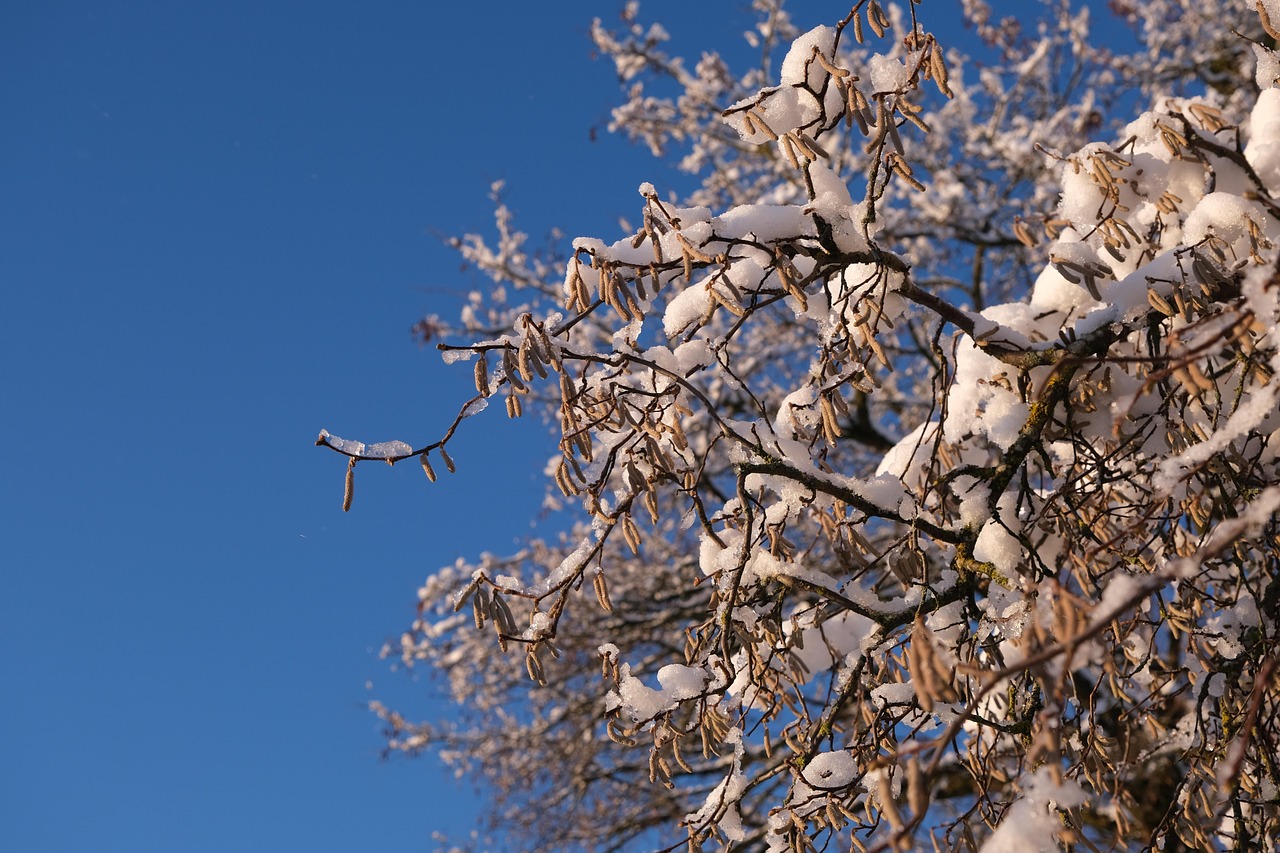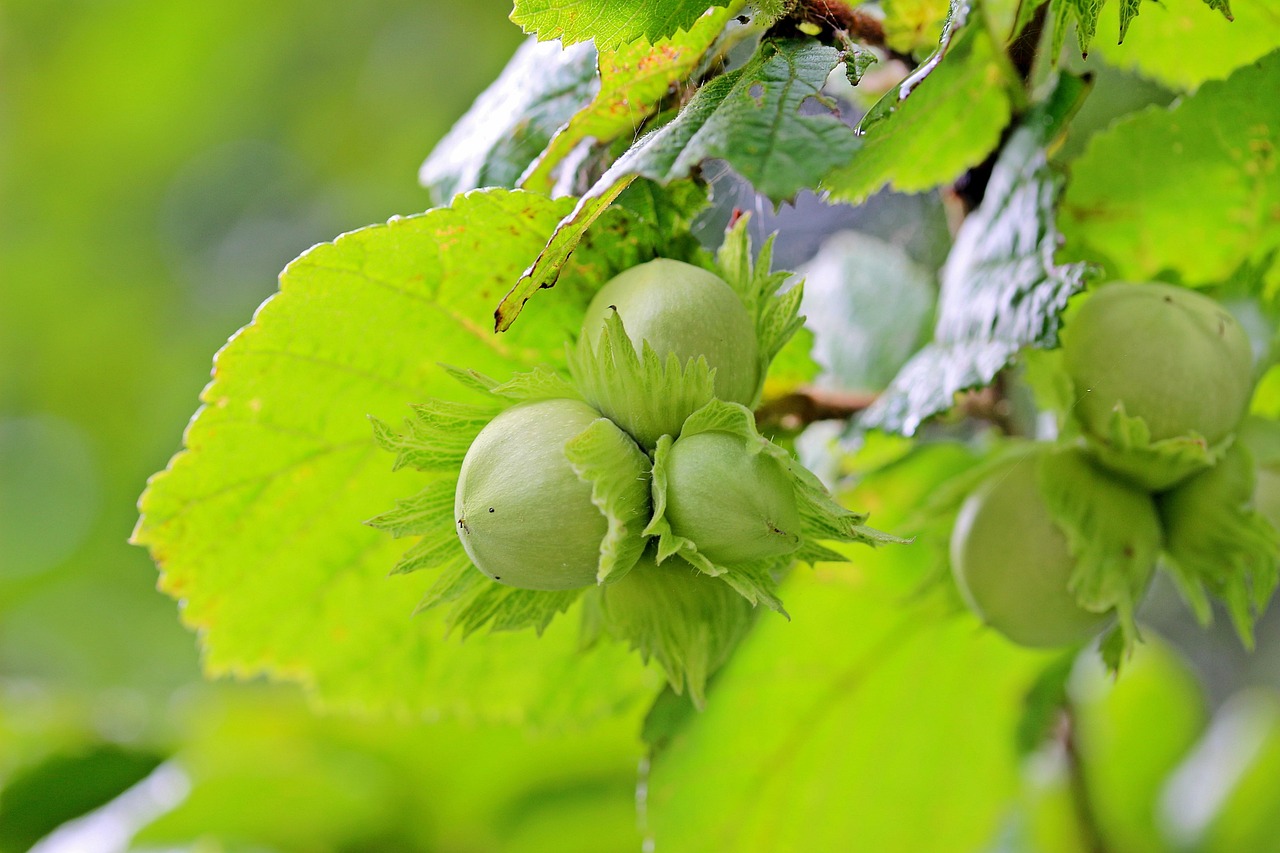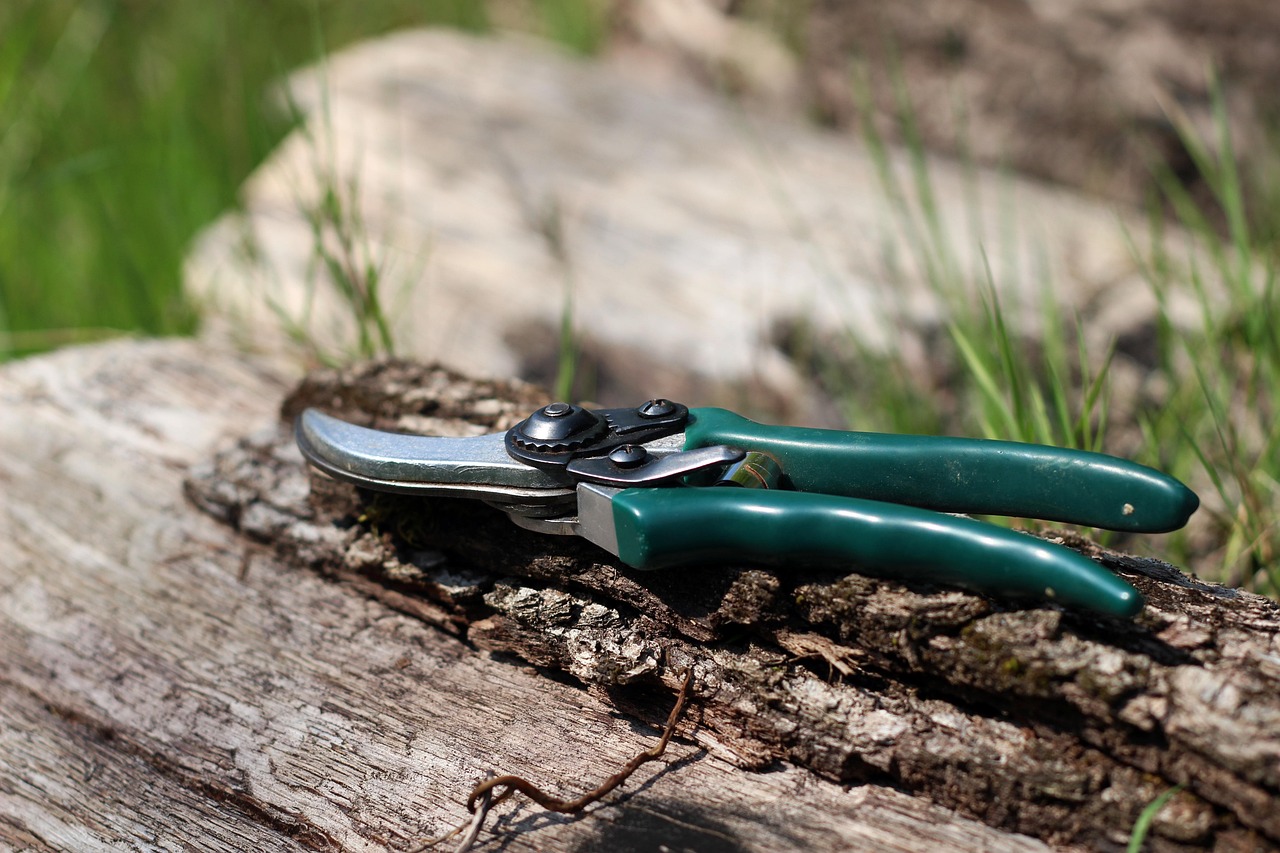Pruning hazelnut trees is essential for boosting nut production. Proper pruning improves air circulation, light penetration, and tree health, leading to increased yields. Regular maintenance helps in shaping the tree, removing dead branches, and encouraging new growth for better nut quality.
Hazelnut trees, scientifically known as Corylus avellana, are popular for their delicious nuts and ornamental value. These trees thrive in temperate climates and can produce nuts for many years when properly maintained. However, like all fruit-bearing plants, hazelnut trees require specific care and attention to ensure optimal production. One of the most critical aspects of hazelnut tree care is pruning.

Pruning is not merely about cutting branches; it is a vital practice that promotes healthy growth and maximizes nut yield. Understanding how to prune hazelnut trees effectively can significantly enhance the overall productivity of the orchard. In this article, we will explore the best practices for pruning hazelnut trees, focusing on timing, techniques, and the benefits of proper maintenance.
Understanding the Importance of Pruning
Pruning hazelnut trees has several important benefits. These include:
- Improved Air Circulation: Pruning helps to open up the canopy. This allows for better air movement, reducing the risk of fungal diseases.
- Enhanced Light Penetration: Removing excess branches enables sunlight to reach all parts of the tree. This is crucial for photosynthesis and nut development.
- Increased Nut Production: Healthy trees produce more nuts. Pruning encourages new growth, which can lead to higher yields.
- Tree Health: Regular pruning removes dead or diseased branches, promoting overall tree vigor.
Before getting into the specifics of pruning techniques, it is essential to understand the structure of hazelnut trees. They typically grow as multi-stemmed shrubs or small trees. Knowing their natural form helps in deciding which branches to keep or remove during pruning sessions.

When to Prune Hazelnut Trees
The timing of pruning can significantly affect the results. Generally, the best time to prune hazelnut trees is during late winter or early spring, just before new growth begins. This timing allows for several advantages:
- It minimizes stress on the tree.
- It reduces the risk of sap loss.
- It allows for better visibility of the tree’s structure, making it easier to identify which branches need attention.
However, in regions with milder winters, some growers may choose to do light pruning during the summer months after harvest. This can be beneficial for shaping the tree without stimulating excessive new growth that could be vulnerable to winter damage.
Basic Pruning Techniques
Proper pruning techniques are vital for achieving the desired results. Here are some fundamental methods to consider:

Thinning Cuts
This technique involves removing entire branches at their point of origin. Thinning cuts help to open up the tree’s canopy and can significantly improve light penetration and air circulation.
Heading Cuts
A heading cut shortens a branch by cutting it back to a bud or a lateral branch. This encourages new growth and can help control the size of the tree while promoting bushy growth, which is beneficial for producing more nuts.
Renewal Pruning
This method focuses on removing older branches to encourage new growth. Typically, older branches are less productive than younger ones. By selectively removing older wood, you can stimulate the growth of more fruitful shoots.

| Pruning Technique | Description | Benefits |
|---|---|---|
| Thinning Cuts | Removing branches at their origin | Improves air circulation and light penetration |
| Heading Cuts | Shortening branches to a bud | Encourages new growth and controls size |
| Renewal Pruning | Removing older branches | Stimulates growth of productive shoots |
Understanding these techniques is crucial for any grower aiming to enhance their hazelnut production. Each method has its specific purpose and benefits, which can contribute to the overall health and productivity of the tree.
In addition to these techniques, it is essential to use clean, sharp tools when pruning. This practice reduces the risk of disease transmission and ensures clean cuts that heal faster. Always disinfect tools before use, especially when moving between trees.
As we delve deeper into this topic, we will explore more advanced strategies and considerations for effective hazelnut tree pruning that can lead to enhanced nut production.
Advanced Pruning Techniques
After mastering basic pruning techniques, growers can implement advanced strategies to further enhance the productivity of hazelnut trees. These techniques focus on promoting optimal growth patterns and maximizing nut yield. Let’s dive into some of the more sophisticated pruning methods.
Crown Management
Crown management is crucial for ensuring that hazelnut trees have the right structure for maximum nut production. A well-managed crown allows for better light exposure and air circulation. Here are some steps involved in effective crown management:
- Selective Thinning: Remove some branches from the upper crown to allow light to reach lower branches. This encourages nut production in areas that may otherwise be shaded.
- Height Control: Maintain a manageable height for easy harvesting and maintenance. This often involves cutting back tall branches while ensuring the tree remains balanced.
- Shape Maintenance: Remove branches that disrupt the natural shape of the tree. Keeping a balanced structure helps nutrient distribution.
Spur Pruning
Spur pruning is a specialized technique aimed at promoting the growth of productive spurs. Spurs are short, stubby branches that produce flowers and, subsequently, nuts. To effectively spur prune:
- Identify Productive Spurs: Look for short, thick branches that have previously borne nuts.
- Prune Old Spurs: Remove older spurs that have stopped producing to make room for new growth.
- Encourage New Spurs: Cut back long branches to stimulate the formation of new spurs.
Training Young Trees
Training young hazelnut trees is essential to establish a strong framework for later years. Proper training during the formative years can help avoid issues that might arise with older trees. Consider these practices:
- Main Leader Selection: Choose a single main leader early on to establish a clear trunk structure.
- Lower Branches Removal: As the tree grows, remove lower branches to promote upward growth and minimize competition.
- Encouragement of Lateral Growth: Allow lateral branches to develop to create a wide canopy, which can support better nut production.
Common Mistakes in Hazelnut Pruning
Even experienced growers can make mistakes while pruning hazelnut trees. Avoiding these common pitfalls can lead to healthier trees and better yields:
- Over-Pruning: Removing too many branches can stress the tree and reduce nut production. Always prune conservatively.
- Poor Timing: Pruning at the wrong time can lead to sap loss or damage from frost. Stick to late winter or early spring.
- Lack of Sanitation: Not disinfecting tools can introduce diseases. Always clean your tools between cuts.
- Ineffective Cutting Techniques: Using dull tools or improper cuts can harm the tree. Always use sharp, appropriate tools and make clean cuts.
The Role of Fertilization in Pruning
While pruning focuses on shaping and maintaining the tree, fertilization plays an equally critical role in enhancing nut production. Proper fertilization provides the nutrients necessary for a healthy growth response post-pruning. Here are key points regarding fertilization:
| Nutrient | Function | Recommended Application Timing |
|---|---|---|
| Nitrogen | Promotes vigorous growth and leaf development | Early spring, before new growth begins |
| Phosphorus | Supports root development and flowering | At planting and during early spring |
| Potassium | Aids in overall plant health and stress resistance | Throughout the growing season |
A soil test is recommended before applying fertilizers to ensure the appropriate nutrients are provided based on existing soil conditions. This practice helps avoid over-fertilization, which can be detrimental to tree health.
Pest and Disease Management Post-Pruning
After pruning, it is important to monitor hazelnut trees for pests and diseases. The wounds created during pruning can attract pests if not managed properly. Here are some tips for effective post-pruning management:
- Regular Inspections: Check trees frequently for signs of pest infestations or disease symptoms.
- Pest Control Measures: Implement integrated pest management strategies, including biological controls and organic pesticides, when necessary.
- Disease Prevention: Ensure proper spacing and sanitation practices are followed to minimize fungal infections.
A proactive approach to managing pests and diseases can safeguard the health of hazelnut trees and enhance their productivity over time.
As we continue exploring hazelnut tree pruning in subsequent sections, we will delve deeper into seasonal considerations and specific techniques tailored to various growing conditions.
Seasonal Considerations for Pruning Hazelnut Trees
Understanding the seasonal growth patterns of hazelnut trees is essential for effective pruning. Different times of the year present unique challenges and opportunities for enhancing nut production. Here, we will explore how to align your pruning efforts with the natural growth cycle of hazelnut trees.
Winter Pruning
Winter is the ideal time for major pruning activities. During this period, the trees are dormant, making it easier to assess their structure without the distraction of leaves and fruit. Key benefits of winter pruning include:
- Reduced Stress: Pruning while the tree is dormant minimizes stress and allows for quicker recovery.
- Visibility: Without leaves, it is easier to see the overall shape and health of the tree.
- Fungal Disease Prevention: Pruning in winter can reduce the risk of introducing fungal diseases that are more active during warmer months.
When pruning in winter, focus on thinning out crowded branches, removing any dead or diseased wood, and shaping the tree to encourage a strong framework for future growth.
Spring Pruning
Spring pruning is typically light and focuses on specific goals, such as:
- Shaping New Growth: After the risk of frost has passed, minor adjustments can be made to direct new growth in desired directions.
- Removing Water Sprouts: These are vigorous shoots that grow vertically and can detract from nut production. Removing them early helps redirect energy into more productive branches.
Spring pruning should be done cautiously. It’s essential to avoid heavy pruning at this time, as it can stimulate excessive growth that may not harden off before winter.
Summer Pruning
Summer pruning can be beneficial for certain objectives. This practice is usually less common but can be employed under specific conditions:
- Controlling Size: If trees are growing too large and becoming unmanageable, summer pruning can help keep their size in check.
- Encouraging Fruit Development: Removing some foliage can improve light exposure to developing nuts.
It is crucial to ensure that summer pruning does not remove too much foliage, as leaves are vital for photosynthesis and overall tree health during the growing season.
Tools and Equipment for Effective Pruning
The right tools can make a significant difference in the efficiency and effectiveness of your pruning efforts. Here are some essential tools you should consider using:
- Bypass Pruners: Ideal for small branches, these tools make clean cuts that promote quick healing.
- Loppers: Useful for larger branches that cannot be cut with pruners. They provide extra leverage for easier cutting.
- Saws: A handsaw or chainsaw may be necessary for larger limbs. Always choose a saw that is appropriate for the size of the branch.
- Protective Gear: Gloves, goggles, and long sleeves protect against cuts and scratches during pruning.
Maintaining your tools is equally important. Ensure they are sharp, clean, and well-oiled to make precise cuts and reduce the risk of disease transmission between trees.
Understanding Hazelnut Tree Growth Stages
A thorough understanding of the different growth stages of hazelnut trees helps inform your pruning strategy. Generally, hazelnut trees go through several stages throughout their lifecycle:
- Establishment Stage: During the first few years post-planting, focus on developing a strong root system and shaping the tree’s structure.
- Juvenile Stage: From about three to six years old, the tree begins to produce nuts. Pruning should encourage branching and spur development without overly stressing the plant.
- Mature Stage: After around six years, trees reach full production capacity. Focus on maintaining tree health and productivity through regular pruning.
- Old Age Stage: Beyond fifteen years, hazelnut trees may require more significant renewal pruning to rejuvenate growth and maintain productivity.
Recognizing these stages allows growers to adapt their pruning techniques to meet the specific needs of the tree at any given time.
Pest and Disease Monitoring Techniques
A proactive approach to pest and disease monitoring enhances the effectiveness of your pruning efforts. Here are some strategies to consider:
- Regular Scouting: Conduct regular inspections of your hazelnut trees. Look for signs of pests or diseases, including discolored leaves or unusual growth patterns.
- Trap Monitoring: Use sticky traps to monitor populations of common pests such as aphids or spider mites. This allows for timely interventions before infestations occur.
- Soil Testing: Periodically test soil health to ensure that nutrient levels support strong tree growth. Poor soil conditions can lead to increased susceptibility to pests and diseases.
By incorporating these monitoring techniques into your care routine, you can swiftly address any issues that arise, ultimately protecting the health of your hazelnut trees and enhancing nut production.
This ongoing attention to seasonal changes, growth stages, and pest management will set the stage for successful hazelnut production as we continue exploring specialized techniques in our final section.
Specialized Pruning Techniques for Maximizing Nut Production
As we finalize our exploration of hazelnut tree pruning, it is important to examine some specialized techniques that can further enhance nut production. By incorporating these advanced practices into your pruning routine, you can achieve optimal results and ensure the longevity of your hazelnut trees.
Precision Targeting
Precision targeting involves focusing on specific branches that are underperforming or overcrowding productive areas. By identifying and selectively pruning these branches, you can redirect the tree’s energy towards more fruitful areas. Here are some techniques for precision targeting:
- Identifying Weak Branches: Look for branches that show signs of poor health, such as stunted growth or lack of foliage. These branches should be removed to enhance overall tree vitality.
- Focusing on Productive Areas: Concentrate on maintaining branches that have historically produced a good yield. These branches should be encouraged through careful pruning.
- Minimizing Competition: Remove any new growth that competes with established productive branches, ensuring that the tree’s energy is not wasted.
Timing and Environmental Factors
The timing of your pruning efforts can be influenced by environmental factors. For instance, weather conditions and overall tree health play a significant role in determining the best time to prune. Consider the following:
- Soil Moisture Levels: It is advisable to avoid pruning during periods of drought, as this can stress the tree. Ensure adequate soil moisture before undertaking significant pruning tasks.
- Temperature Fluctuations: Be cautious of late frosts in spring. Pruning too early may expose new cuts to frost damage. Monitor local weather patterns to choose the ideal pruning window.
Integration of Technology
Modern technology can enhance traditional pruning methods. Employing tools and techniques like drone surveillance or digital imaging can provide valuable insights into tree health and growth patterns. Here are some ways technology can assist:
- Drones for Aerial Surveys: Drones can capture images of the entire orchard, helping identify areas in need of attention without the labor-intensive process of walking through every row.
- Mobile Apps for Tracking Growth: Utilize mobile applications designed for fruit tree management that help track growth stages, pest issues, and even pruning schedules.
Final Thoughts
Pruning hazelnut trees effectively is key to enhancing nut production and overall tree health. Throughout this article, we have explored a variety of techniques and considerations essential for successful pruning. From understanding seasonal factors to employing advanced methods, each step contributes to better nut yield and tree longevity.
Key takeaways include the importance of proper timing, the use of appropriate tools, and maintaining a vigilant approach to pest and disease management. Emphasizing regular inspections and a proactive response to environmental conditions ensures that your hazelnut trees remain productive over the years.
By integrating precision targeting, environmental awareness, and technology into your pruning practices, you can significantly enhance the performance of your hazelnut orchard. This holistic approach not only improves the quantity and quality of nuts produced but also promotes the overall health of your hazelnut trees.
In conclusion, effective hazelnut tree pruning requires a combination of knowledge, skill, and adaptability. As you apply these insights and strategies, you will be well-equipped to maximize nut production while ensuring the sustainability of your hazelnut trees for generations to come.
